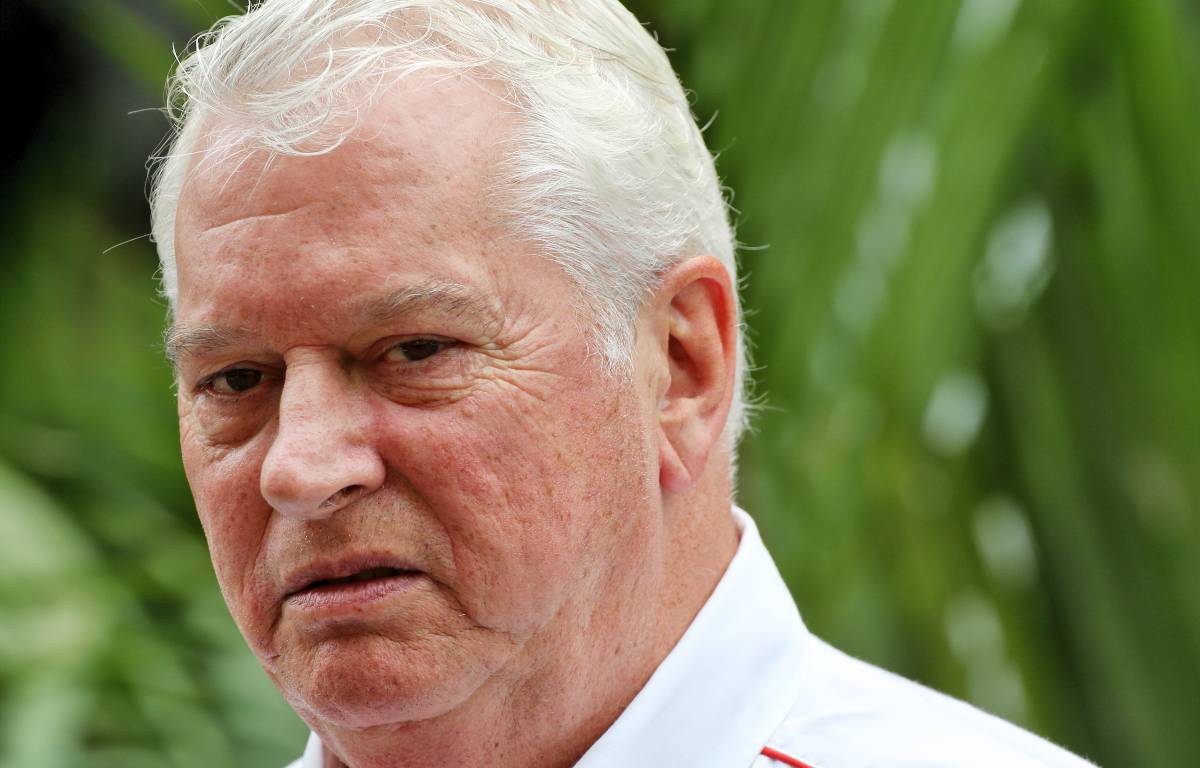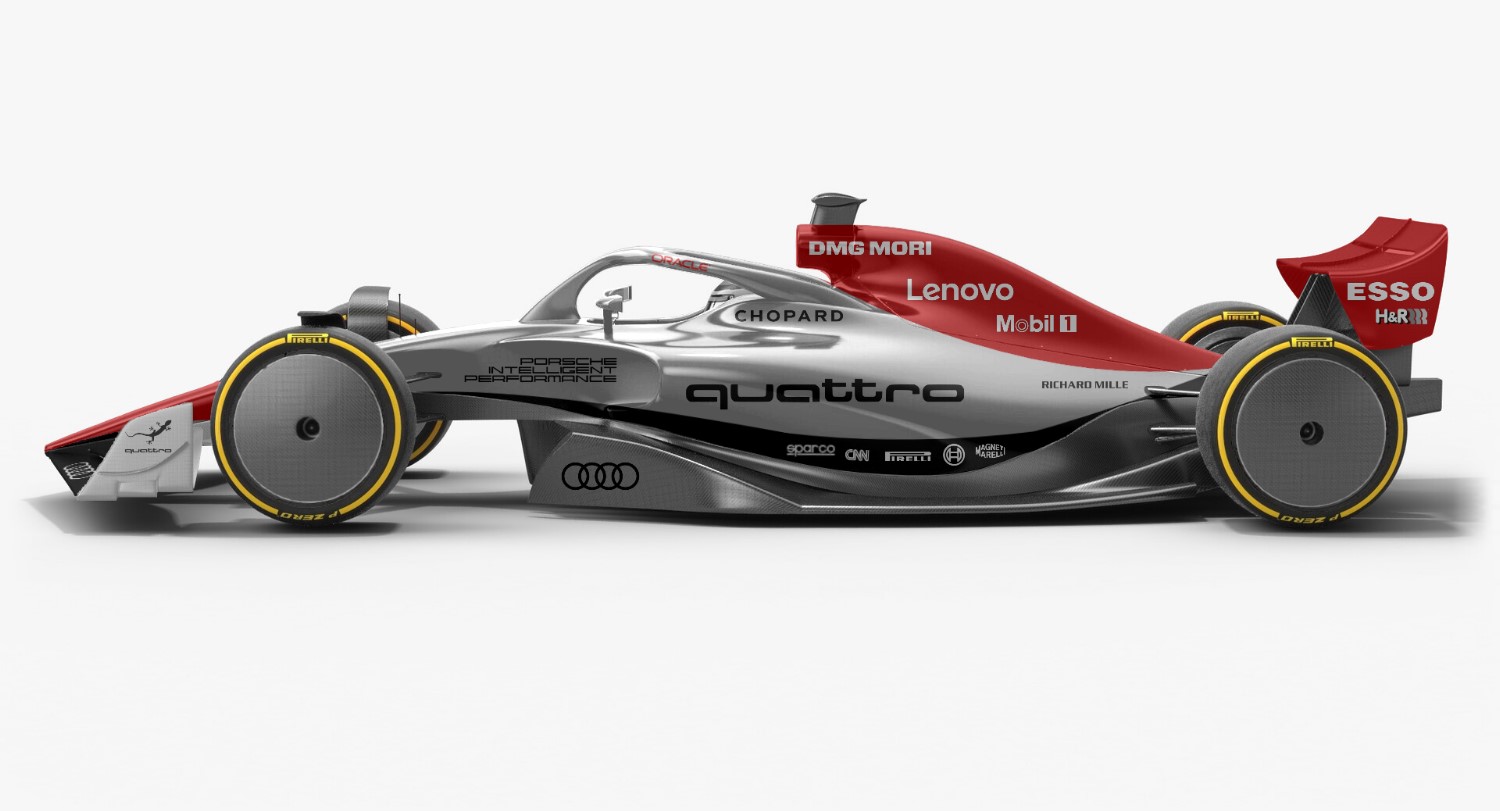F1: New 2026 cars will have active aerodynamics (Update)
In an update, Formula 1‘s chief technical officer, Pat Symonds said “We’ve been working on 2026 for a couple of years on the aerodynamics, and whenever you finish a project, you are never satisfied; you know you can do better,” he told Total-Motorsport.com.
“Just as we were finalizing the 2022 regulations, we had a breakthrough on something that could be much better, which was carried forward and developed into the 2026 car.”
“In the first couple of years of (development of) the 26 cars, we wanted to look at radical ideas as well; we evaluated those quite a lot; none of them were worth pursuing”, explained Symonds.
“In terms of appearance, we are playing around with dimensions at the moment. I hope the cars will be shorter; they’re very big at the moment.
“They’ll have a lot of automatic aerodynamics. So you’ll see moveable wings, but it’ll still be recognizable as a Formula 1 car. You’ll be able to see their heritage.”
Active Suspensions ruled out
“Active suspension, as we know it, would not have helped porpoising; porpoising is a higher frequency than really a normal active system could deal with, some could deal with it, but they’re very power savvy.
“But what we need to do is put on a good show for the fans; that’s what matters, so does that need technology that’s hidden away? I don’t think it does.”
January 20, 2023
The next generation of Formula 1 cars are set to be smaller, with active aerodynamics for lower drag, and reduced fuel tanks because the internal combustion engines will burn less fuel when they are introduced in 2026.
After an F1 Commission meeting last April, the FIA stated its aims for wholesale rule changes which will come into effect in 2026, including reduced drag, reduced mass and the use of sustainable materials.
“It’s active aero – absolutely,” F1’s chief technical officer Pat Symonds told MotorSport magazine when asked how the low drag targets – and therefore greater fuel efficiency – could be achieved. “You can’t just reduce drag to cut fuel consumption because the car won’t go round corners.

“So it’s all about active aero – having two modes to the car effectively. So, rather different to DRS, there’s a mode where the car has high downforce and consequently high drag when it’s in the corner, and a mode where it has low drag when it’s on the straight and consequently low downforce.
“That’s a simplistic view [and] there are variations to that, but that’s essentially the real basis of what active aero for future F1 is about.”
“The fuel carry for the race will be less, so that also helps by taking some volume of the fuel tank away,” he says. “The amount of hybridization is increasing – the power of the internal combustion engine is going down and the power of the electrical machines is going up, so immediately you are using less fuel.
“Most significant though is the drag reduction because that’s where the majority of the power is going, i.e. dragging cars through the air.
“There will be a reasonable reduction in fuel consumed during the race – my estimate for the moment be 20 percent, maybe even 25 percent, less than when we are using at the moment.”
“Cars are built the way they are, because that’s the best way to do it.” he says. “There are certain materials where we really do need to think a lot about recycling, because of difficulty of getting them and the conditions around those, like nickels and cobalts.
“In the batteries we think there’s a lurking concern there. It’s all very well, people saying, ‘When batteries come out of a road vehicle they can be second purposed,’ but that only goes up to a point.
“We believe that it’s really important that recycling is an important part of the whole electrical system for the next generation of cars, so we’ll be doing quite a lot of work in that area.”
Speaking at Autosport International last week, Symonds said the following performance of the 2026 cars would be “even better than the ’22 cars”.
DRS is set to remain part of the rules package, but Symonds explained how the active aerodynamics could be used to augment downforce and make up for the amount lost when it is closely following a car in front.
“We won’t lose DRS, because there’s totally active aerodynamics on the ’26 car,” said Symonds.
“DRS is drag reduction. What I’ve always felt we should do is have downforce augmentation. Because what does the car behind do? Yes it loses some drag, but what really holds it is the fact it lost downforce.
“Our idea now is to augment the downforce back to where it should have been if the leading car wasn’t there.”
“Everyone talks about overtaking, but for us, overtaking was the end of the battle,” said Symonds.
“It’s the battle that’s interesting, it’s the unpredictability – is he going to get past? And I know a lot of people criticise DRS, and that was the trouble with DRS, it can make a pass too easy.
“Conversely, when you don’t have it, the Imola race when the FIA were very reluctant to activate DRS, you do get some dull races. It’s a matter of getting it right.”
“When we studied the ’26 project, we did have another clean sheet of paper, and we investigated all sorts of things,” he said.
“We actually went right back to a skirted ground effect car to get some kind of idea where the ultimate was. We looked at fan cars, all sorts of weird things.
“But the ’26 car will be quite conventional, because that’s the way we want it to be.”
Mark C. reporting for AutoRacing1.com
